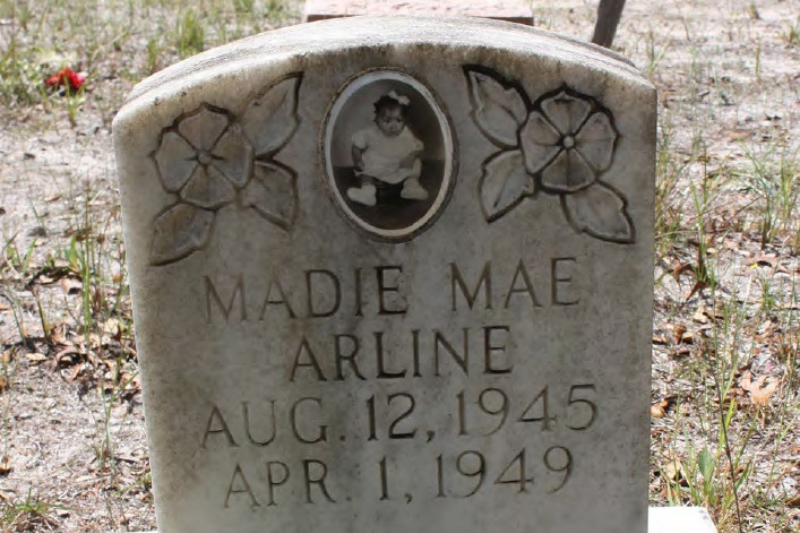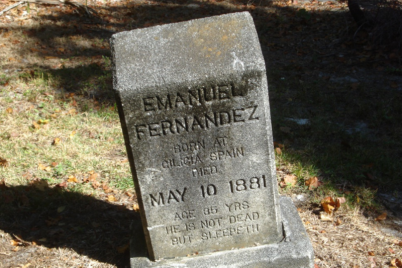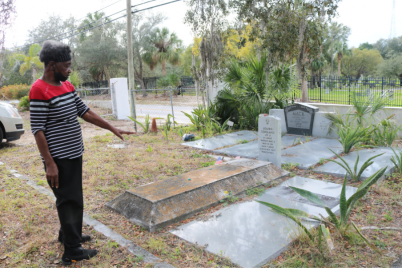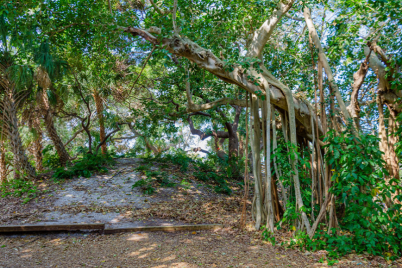Established in 1916 as Rose Hill Cemetery, the earliest recorded burial occurred in 1904. Photo by Tina Bucuvalas | City of Tarpon Springs.
BY JAMES A. SCHNUR, The Gabber
Moving beyond a thorny past: Admiring the Rose
TARPON SPRINGS — Despite periods of neglect and poor maintenance, Rose Cemetery in Tarpon Springs remains better preserved and more intact than most other historically Black cemeteries in Pinellas County. This burial ground occupies more than 4.6 acres east of the city-owned Cycadia Cemetery.
Established in 1916 as Rose Hill Cemetery, the earliest recorded burial occurred in 1904. However, some believe that undocumented burials may date back to the 1870s, years before Tarpon Springs incorporated in 1887.
Black people played an important role in Tarpon’s sponging industry before Greek sponge divers arrived in 1905. Blacks from Key West and Caribbean islands, as well as the Bahamas, settled in this area by the 1890s. Many became proficient spongers, while others worked for fishing companies, sawmills and the booming agricultural industry. Some continued to harvest sponges alongside the Greeks after their arrival.
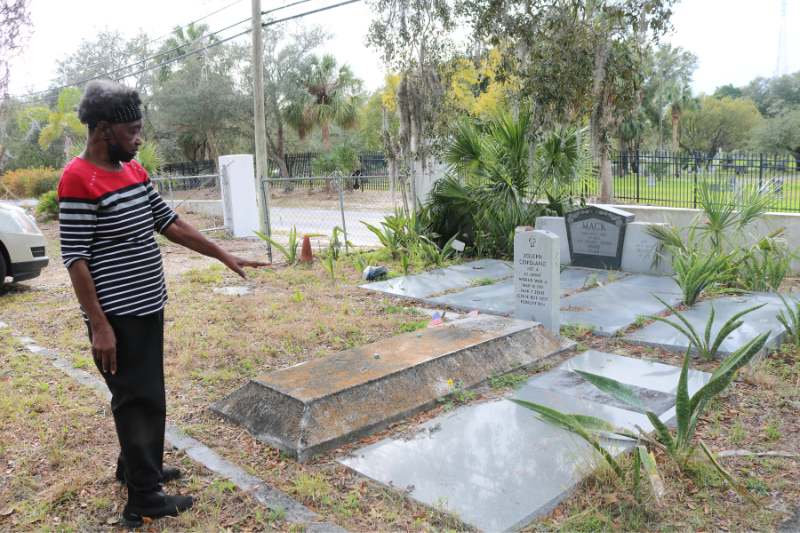
Annie Dabbs works with a small group of volunteers to try and maintain Rose Cemetery (formerly Rose Hill Cemetery), without any support from the City of Tarpon Springs. Photo by Jake-Ann Jones
A cemetery blooms in tough soil
The Lake Butler Villa Company, an enterprise originally created by Hamilton Disston in 1882 to manage his holdings in the area, provided a 99-year lease for the cemetery site to a local citizens’ board in 1916. The next year, the Rose Hill Association assumed responsibility for the property. To accommodate more burials, the size of Rose Hill expanded in 1949 and again in 1953.
Rose Hill faced challenges throughout its history. By the 1950s, the cemetery suffered from poor record-keeping practices, missing documents, funding challenges and haphazard burials. Some unmarked graves were forgotten, while other gravesites were misplaced.
These sad trends continued into the next few decades as sections of the cemetery fell into disrepair and suffered from prolonged neglect. Lacking a maintenance plan or sufficient funds for upkeep, the situation looked bleak by the 1970s.
Under new management in 1979, the name Rose Cemetery replaced the earlier name of Rose Hill. A slow turnaround began. Notable improvements took place by the early 1990s with campaigns to clear unwanted foliage and debris.
A survey in 1999 found only 600 or so markers on grounds that had at least 1,000 burials. Ground-penetrating radar and cadaver dogs located more than 200 unmarked graves. These spots were recorded to prevent crews from digging on these sites for future burials.
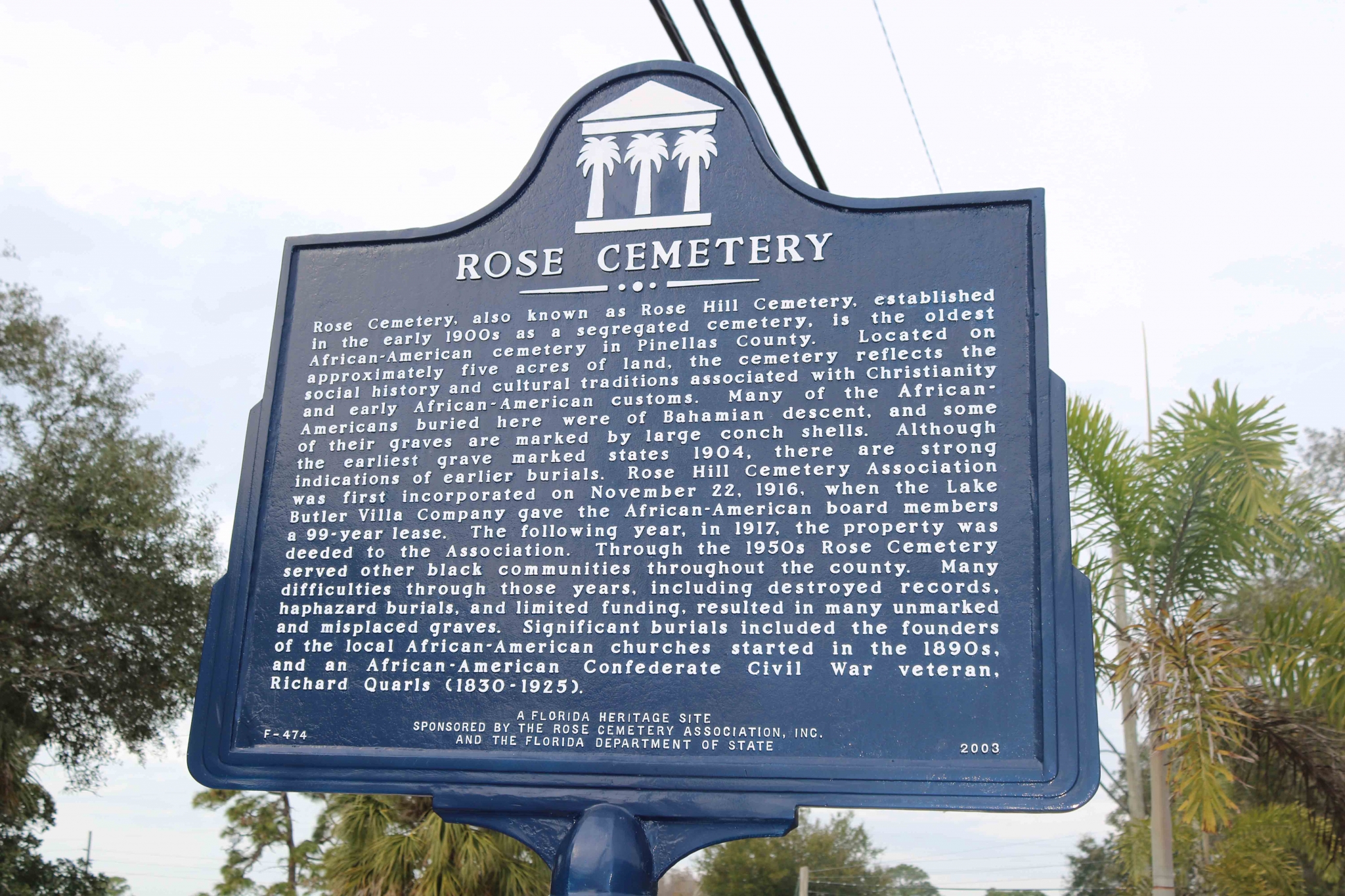
Photo by Jake-Ann Jones
Appreciating the Rose
Burial practices at Rose mix traditional African, Caribbean and southern practices. Some plots have scraped landscaping, where grass is removed from family burial plots and the topsoil is raked. Most graves have an east-west alignment with the heads of the bodies interred below resting on the west but facing east as the souls await Judgment Day. Many markers have conch shells or other personal items atop or alongside them.
One of the most notable burials at Rose Hill was re-discovered after a GPR survey located his unmarked grave. J. Richard Quarls was born a slave in South Carolina in 1833. During the Civil War, he fought alongside his master’s family on the side of the Confederacy.
After coming to Tarpon Springs in 1910, he assumed the name “Christopher Columbus” because of concern about how the local community would view his service to the Confederacy. Quarls passed away in 1925.
In February 2003, his gravesite was rededicated with a new headstone. In a ceremony that may have seemed out-of-place to many, members of the United Daughters of the Confederacy and the Sons of Confederate Veterans arrived at this historically Black cemetery, itself a legacy of racial segregation. As they paid their respects to Quarls, those gathered at Rose heard the song “Dixie” play on this hallowed ground.
A century after its formal establishment, leaders from the City of Tarpon Springs submitted an application to the Florida Department of State in 2016 to nominate Rose Hill Cemetery as a candidate for the National Register of Historic Places. The documents focused mostly on the years between 1904 and 1967.
After coming to Tarpon Springs in 1910, he assumed the name “Christopher Columbus” because of concern about how the local community would view his service to the Confederacy. Quarls passed away in 1925.
In February 2003, his gravesite was rededicated with a new headstone. In a ceremony that may have seemed out-of-place to many, members of the United Daughters of the Confederacy and the Sons of Confederate Veterans arrived at this historically Black cemetery, itself a legacy of racial segregation. As they paid their respects to Quarls, those gathered at Rose heard the song “Dixie” play on this hallowed ground.
A century after its formal establishment, leaders from the City of Tarpon Springs submitted an application to the Florida Department of State in 2016 to nominate Rose Hill Cemetery as a candidate for the National Register of Historic Places. The documents focused mostly on the years between 1904 and 1967.

